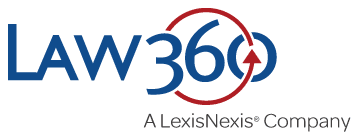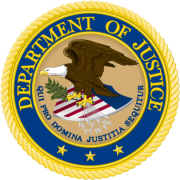[Updated] The Ethics Case for Due Diligence: Azish Filabi’s New “Expert Analysis” on Law360
 The case for business ethics was recently made very clear to me when I co-chaired at the New York State Bar Association International Section’s Seasonal Meeting in Guatemala, particularly as it relates to hidden ethics risks in M&A transactions. I wrote a piece for the Law360 site as part of their “Expert Analysis” explaining these risks.
The case for business ethics was recently made very clear to me when I co-chaired at the New York State Bar Association International Section’s Seasonal Meeting in Guatemala, particularly as it relates to hidden ethics risks in M&A transactions. I wrote a piece for the Law360 site as part of their “Expert Analysis” explaining these risks.
It’s a case study about A.P Moller-Maersk who purchased a port in Guatemala in 2016 just before it became embroiled in a corruption scandal, eventually adding another $43M to their acquisition costs to get a new, clean permit.
The piece is included in its entirety below, with permission from Law360:
As CEO of Ethical Systems, I’m frequently asked about the business case for ethics. Can it be financially beneficial for corporations to focus on their own ethical behavior? I often point to the research that shows that running an ethical company pays in the long run, particularly since the alternative increases legal and enforcement costs, and impacts a firm’s reputation.
But a panel I just co-chaired at the New York State Bar Association International Section’s Seasonal Meeting in Guatemala helps underscore how ethics risk can directly impact the bottom line.
The case involves a Dutch company (APM Terminals, which is owned by the Danish A.P. Moller-Maersk Group) that purchased a company that owns a port in Guatemala (Terminal de Contenedores Quetzal — TCQ) in early 2016. The acquisition was part of a larger deal to buy several ports throughout Europe and Latin America from the Spanish Grup Maritim TCB. (There are other minority parties to the transaction, as well as implications for various local and international banks that were involved, which I’ve omitted for brevity).
Only months after completion of the deal, the port became the center of a large bribery scandal in Guatemala that involved the most senior political leaders of the country. The allegations are that several employees of the Spanish TCB, including its former majority shareholder Angel Pérez-Maura, paid millions in bribes in 2013 to local government authorities for the right to build the port.
The alleged bribery ring involved several high level politicians, including Guatemala’s former President Otto Perez Molina, his son Gustavo Luna and vice-president Roxana Baldetti. By June 2016, the Domain Extinction Court (similar to a civil forfeiture process in the U.S.) ordered that the port be seized and put it in administrative custody.
The court imposed intervention put operations in hands of a neutral person, working at the request of the court, while the port’s new management could sort out the allegations and liabilities with the local authorities. The validity of the original permits was at issue.
If they were obtained through fraudulent means via bribery, then they were deemed invalid. APM/Maersk had to choose between two bad options: lose the entire value of the terminal it just bought, or pay for a new, clean permit to operate the port.
News reports indicate that APM/Maersk settled with the Guatemalan government for $43.2 million for a new permit. The new deal includes a provision that the terminal have a $6 million x-ray container scanning system installed to detect illicit use of the port by drug cartels. The criminal bribery allegations against some of the individuals involved in the scandal are still pending.
Shipping Watch reports that APM Terminals undertook extensive due diligence, including site visits and detailed legal and financial analysis, to avoid potential liability before the $1B acquisition. But they were blindsided by the risk. Their general counsel Susanne Marston explained that they received an alert that there had been a raid on the facilities and that a member of the terminal’s managing directorate had been arrested.
This case raises a major issue: How can you unearth ethics risk in a transaction before it’s too late?
What we know about ethical misconduct is that the activity is often subtle (no one ever calls a transaction a bribe, it’s a “commission” or another euphemism, and not traceable) and driven by organizational culture and societal norms that have often rendered it so commonplace that it is barely scandalous.
Organizational culture tends to be a nebulous aspect of a due diligence process, but given that it drives most unethical behavior, it is overlooked at an acquirer’s peril. In this case, the $43.2 million price tag makes the business case for ethics palpable (I emphasize that there is no allegation of wrongdoing committed by APM or Maersk, although they are the ones that paid the reparations).
Acquirers will always be at the mercy of the target company for information. To mitigate that risk, thorough investigations and contractual terms can help. Still, as Audrey Ingram (a partner at Richards Kibbe & Orbe LLP) stressed in a webinar she led this summer on anticorruption risk in M&A transactions, contract provisions such as representations and warranties “are by no means a substitute for conducting adequate due diligence.”
Ingram recommends conducting risk-based due diligence, which considers factors such as the industry and location of the target. Certain jurisdictions may be at higher risk for bribery and corruption. She addressed some of these issues in depth in a recent CLE webcast titled “Mitigating FCPA Risks in Corporate Transactions” at AltaClaro.
A prudent acquirer should also consider assessing the internal ethical culture of an organization. This can be done through focus groups and culture surveys to get a better understanding of the common mindsets and beliefs that drive behavior in a company. The assessment should also include analysis of whether the informal norms of behavior align with the company’s stated values — in other words, does the company “walk the talk?”
Any merger ultimately leads to questions about how to integrate the cultures of the two organizations, and certainly management will be preoccupied with culture management throughout the integration process. Being deliberate about these issues prior to closing a deal can help the company not only get a jump start, but also find red flags and potential liabilities.
The TCQ case raises numerous questions. Will ethics risk increase as anti-corruption efforts by governments intensify around the world? Can contractual relationships ever provide enough insurance for companies doing business in a jurisdiction that is known for high levels of bribery? For local governments in the emerging markets, how can they can best manage the long-term interest of fighting corruption — particularly given that there may be short-term costs to attracting large¬scale investment by foreign and multinational companies?
The best way to manage ethics risk is to prevent it. Short of that, advisors may want to start taking a deeper look at how organizational culture can either solidify or cloud otherwise fruitful relationships.







